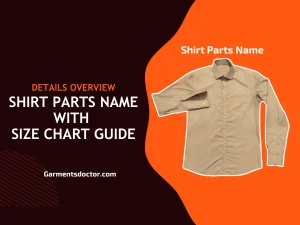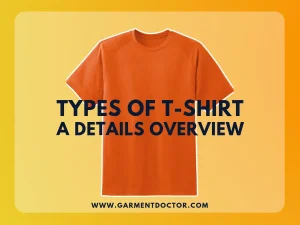Retro clothing style refers to fashion that mimics trends from the past. It embraces styles from the 20th century, typically focusing on the 1950s to the 1980s.
Retro fashion is about bringing back the charm and nostalgia of bygone eras. It celebrates history, culture, and timeless style through clothing. This style provides a unique way to express individuality and a love for the past.
What Is Retro Clothing Style?
Retro clothing style refers to fashion that harks back to previous decades, often embracing trends from the 20s through to the 90s. It’s a nostalgic embrace of vintage aesthetics, merging past designs with modern flair to create timeless looks.
What Defines Retro Fashion?
Retro fashion refers to the revival of styles from previous decades. Unlike vintage clothing, which is original from the period, retro takes inspiration and reproduces it with a contemporary twist. Elements that typically define retro clothing include:
- Design inspiration: Drawing from the fashion trends of the 20s through to the 80s, retro clothing often features polka dots, psychedelic prints, and poodle skirts.
- Fabric and textures: Retro garments may utilize materials such as polyester, which was popular in the 70s, or velvet, a staple of the 60s.
- Color schemes: The colors of retro clothing often reflect their era of inspiration, with mustard yellows from the 70s or neon hues from the 80s.
Key Pieces Of Retro Clothing Style
To truly capture the essence of retro fashion, certain key pieces are essential. Here’s a look at some must-haves for anyone wanting to delve into this timeless trend:
- A-line skirts: A staple of the 50s and 60s, these skirts are flattering on many body types and exude a classic femininity.
- Leather jackets: Reminiscent of the cool 50s and edgy 80s, a well-fitting leather jacket adds instant retro appeal.
- High-waisted jeans: A nod to the 70s, high-waisted jeans pair perfectly with crop tops and platforms for a retro-chic look.
The retro clothing style is a vibrant and eclectic way to pay homage to the fashion forebears while making a statement that’s all your own. It’s about mixing the old with the new to create something truly unique, and most importantly, it’s about having fun with your personal style.
The Retro Revival Timeline
The retro revival moves in cycles. Every few years, old trends become hot again. Here’s a simple timeline:
- 1920s: Known for flapper dresses, sequins, and bold accessories.
- 1950s: Marked by cinched waists, full skirts, and polished looks.
- 1960s: Featured bold patterns, vibrant colors, and mini skirts.
- 1970s: Highlighted by bell-bottoms, floral prints, and disco glam.
- 1980s: Recognized for power suits, shoulder pads, and neon hues.
5 Key Characteristics Of Retro Clothing Style
Retro clothing style embraces nostalgia, featuring designs that echo past fashion eras. Key characteristics include vintage patterns, classic cuts, and iconic accessories that capture the essence of bygone decades.
Let’s explore the key characteristics that make retro clothing so distinctive and sought after.
1. Time Periods And Inspiration
- Influence from bygone eras
- Historical accuracy
- Historical accuracy
2. Distinctive Patterns And Colors
- Vibrant hues
- Iconic prints
- Contrast and combination
3. Fabrics And Textures
- Synthetics and naturals
- Textural elements
- Durability and comfort
4. Tailoring And Silhouettes
- Fitted and flared
- Tailoring techniques
- Adaptability
5. Accessorizing And Detailing
- Period-specific accessories
- Craftsmanship
- Versatility
How To Create Retro Clothing Style?
Creating a retro clothing style begins with exploring vintage shops for classic pieces. Mixing these finds with modern accessories gives your outfit a timeless flair.
Key Elements To Include In Your Wardrobe
Embarking on your retro fashion journey involves curating pieces that reflect the essence of the past. Here’s a breakdown of essential items to look for:
- High-waisted pants and skirts: These pieces accentuate the waist and are reminiscent of the 50s and 60s fashion.
- Vintage dresses: Look for polka dots, floral prints, or A-line cuts that scream retro.
- Bold prints and patterns: Stripes, checks, and psychedelic prints were all the rage in the 70s and 80s.
- Classic footwear: Think Mary Janes, loafers, or platform shoes to complement your retro outfits.
- Accessories: Add vintage-inspired sunglasses, scarves, or hats to round off the look.
Each component is pivotal in crafting an authentic retro style, allowing you to mix and match pieces for various occasions.
Differences Between Retro & Vintage Clothing
Retro clothing style draws inspiration from recent fashion eras, typically ranging from the 1960s to the 1990s. Vintage attire, on the other hand, refers to authentic pieces from these earlier decades, often 20 years or older, embodying the originality of their time.
The Age Factor
Retro clothing:
- Retro refers to new clothing that imitates the style of a previous era. Think of it as a nostalgic homage to fashion trends from the not-so-distant past.
Vintage clothing:
- Vintage pieces are generally at least 20 years old, connecting you directly with the actual time period they represent. These garments are original from their respective eras, offering a tangible slice of fashion history.
Style And Production
Retro clothing:
- These items are often mass-produced, making them more accessible and affordable. They capture the essence of past trends while being infused with contemporary materials and techniques.
Vintage clothing:
- Vintage clothing is characterized by its unique quality and craftsmanship. Finding vintage attire can be like uncovering hidden gems, with each piece having its own story and rarity that can’t be replicated.
Cultural Impact
A plain paragraph approach suits this section well. The impact of retro and vintage clothing on culture is significant. Retro styles bring past trends back into the limelight, influencing current fashion and often sparking a renewed interest in bygone eras.
Conversely, vintage clothing carries the authenticity of its time, often becoming a collector’s item and serving as an inspiration for designers looking to create something new from something old.
Sustainability And Value
Retro clothing:
- Choosing retro can be a sustainable option as it encourages the reproduction of classic styles rather than the constant churn of fast fashion.
Vintage clothing:
- Vintage items are inherently sustainable, as they are essentially recycled goods. They often increase in value over time, especially if they are well-preserved and from a sought-after era or designer.
Tips For Identifying Retro And Vintage Clothing
Crafting the perfect retro or vintage look begins with being able to identify what’s what. Here are some tips to help you distinguish between the two:
Look for labels:
- Vintage clothing often has tags that reflect the branding of past decades, which can be a giveaway to its authenticity.
Examine the quality:
- Vintage items were typically constructed with higher-quality materials and detailed craftsmanship, whereas retro items might not match that level of quality.
Research fashion history:
- Familiarizing yourself with the styles of different eras can help you spot retro-inspired pieces versus genuine vintage finds.
Conclusion
Retro fashion offers a nostalgic escape into the chic styles of bygone eras. Whether you’re mingling at a themed event or incorporating vintage flair into daily wear, the charm of retro clothing is timeless. Dive into this expressive trend and let history’s fashion inspire your modern wardrobe.
Read More:
Modest Clothing: What It Is & Why It’s Trending in 2024
What is a Teddy Garment and Why Is It So Popular?
Top 10 Best American-Made Clothing Brands In 2024
Frequently Asked Questions
What Defines Retro Clothing Style?
Retro clothing style refers to fashion from the past, typically spanning from the 1920s to the 1980s. It involves wearing garments that mimic or are inspired by vintage trends. Retro outfits often showcase bold patterns, vibrant colors, and unique silhouettes, embodying the spirit of the bygone eras.
How To Incorporate Retro Style Into Modern Wardrobe?
To blend retro style with contemporary fashion, start with one vintage piece. Pair it with modern staples for balance. For example, wear a retro blouse with current high-waisted jeans. Accessorize with vintage-inspired jewelry or sunglasses to add a subtle retro touch.
Why Is Retro Fashion Popular Again?
Retro fashion is popular due to its nostalgic appeal and timelessness. It allows individuals to express creativity and uniqueness. Moreover, the cyclical nature of fashion often brings past trends back into vogue, making retro styles a sustainable choice for conscious consumers.
Can Retro Clothing Be Considered Vintage?
Retro clothing is not necessarily vintage. Retro implies a style that resembles trends from the past, while vintage refers to actual garments from a previous era, typically at least 20 years old. Retro fashion captures the essence of vintage in modern reproductions or inspired designs.
What Eras Are Popular In Retro Fashion?
Popular eras in retro fashion include the flamboyant 1960s, the disco-influenced 1970s, and the bold patterns of the 1980s. Each period is characterized by unique styles, fabrics, and accessories that retro enthusiasts often blend into modern outfits.
Can Retro Clothing Be Worn Daily?
Yes, retro clothing can be incorporated into daily wear. Many people mix retro pieces with contemporary clothing to create a unique, personalized look that’s suitable for everyday life, from casual outings to professional environments.





